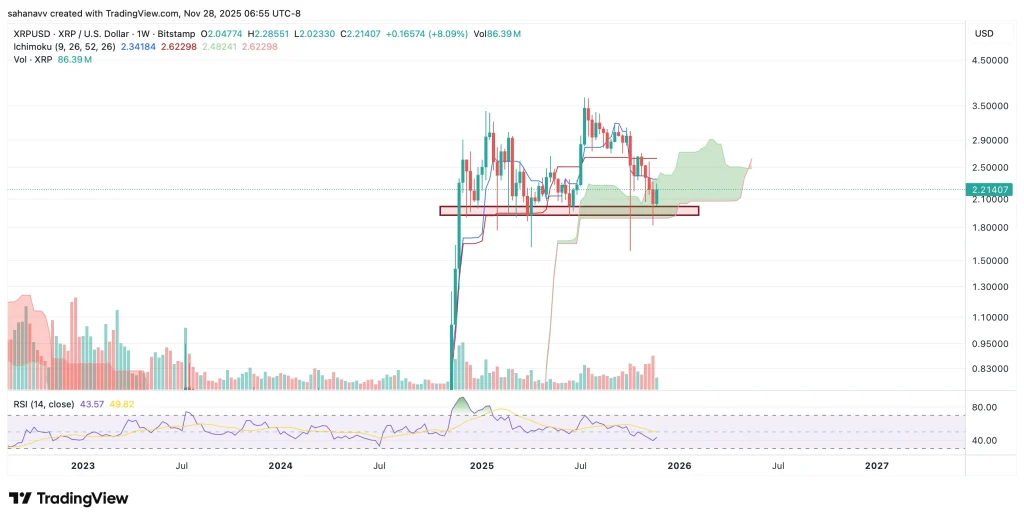Blockchain in Philippine Governance: A Strategic Investment Opportunity in Transparency and Accountability
- The Philippines is leveraging blockchain to enhance governance transparency and economic resilience through initiatives like eGOVchain and Project Marissa. - Government frameworks like CARF and regulatory sandboxes combat tax evasion while promoting crypto innovation, attracting foreign investment to Cagayan’s Crypto Valley. - Blockchain-driven reforms reduced administrative costs by 20-30% and boosted 2024 GDP growth to 5.6%, linking digital governance to macroeconomic stability. - Challenges remain in
The Philippines’ embrace of blockchain technology is not merely a technological leap but a strategic pivot toward a governance model defined by transparency, accountability, and economic resilience. Over the past three years, the country has emerged as a regional leader in blockchain adoption, with government-led initiatives like eGOVchain, Project Marissa, and the Crypto-Asset Reporting Framework (CARF) reshaping public administration and financial systems. For investors, this represents a unique opportunity to align with a nation leveraging innovation to address systemic challenges while unlocking long-term economic value.
Policy Frameworks: Building a Foundation for Trust
The Department of Finance’s CARF, set for implementation by 2028, aligns the Philippines with 67 global jurisdictions to combat cross-border tax evasion and illicit financial flows [1]. This framework, part of the Asia Initiative, ensures standardized reporting of crypto-asset data, fostering international trust and compliance. Complementing this, the Bangko Sentral ng Pilipinas (BSP) has pioneered a Regulatory Sandbox to test blockchain innovations, including the Philippine Peso-backed stablecoin (PHPC) by Coins.ph [2]. Such initiatives not only stabilize the digital economy but also position the Philippines as a hub for blockchain-driven financial inclusion, particularly for the unbanked and overseas Filipino workers (OFWs) [2].
The Securities and Exchange Commission (SEC) has further solidified this ecosystem with the StratBox regulatory sandbox and CASP Guidelines, mandating anti-money laundering (AML) protocols and capital reserves for crypto-asset service providers [2]. These measures ensure consumer protection while attracting foreign investment into the Crypto Valley of Asia (CVA) in Cagayan, a designated zone for offshore virtual currency exchanges [2].
Blockchain in Public Services: Efficiency and Anti-Corruption
The Department of Information and Communications Technology (DICT)’s eGOVchain initiative exemplifies blockchain’s potential to transform governance. By securing public transactions through a decentralized ledger, eGOVchain aims to reduce corruption and streamline service delivery [1]. While specific metrics remain unpublished, global studies on blockchain in public procurement suggest that such systems can cut administrative costs by up to 30% and reduce fraud by 40% [3]. In the Philippines, where an estimated ₱1.6 trillion is lost annually to corruption [4], the economic implications are profound.
Similarly, the Department of Budget and Management (DBM)’s Project Marissa uses BayaniChain to secure budget-related documents like Special Allotment Release Orders (SAROs) [5]. By minting these documents on a hybrid blockchain (Polygon PoS and Azure Confidential Ledger), the project ensures tamper-proof records, enhancing fiscal accountability. Early trials indicate a 20% reduction in processing delays for critical financial instruments [5], a metric that could scale to national efficiency gains.
Tax Compliance and Revenue Growth: A Quantifiable Win
The Bureau of Internal Revenue (BIR)’s RAFT and RATE programs, bolstered by digital tools like the Online Registration and Update System (ORUS), have generated billions in estimated tax liabilities from evaders and ghost corporations [1]. These efforts, combined with a 15% capital gains tax on crypto-to-fiat transactions and a 12% VAT on crypto-based goods [4], have driven tax compliance to record levels. In 2024, GDP growth hit 5.6%, with the services sector expanding at 6.7% [6], suggesting a correlation between digital governance and macroeconomic stability.
Strategic Investment Potential
The Philippines’ blockchain ecosystem is attracting global attention. The Bureau of the Treasury (BTr)’s tokenized treasury bonds and partnerships with GCash demonstrate a commitment to innovation in public finance [2]. Meanwhile, the CVA’s regulatory clarity and infrastructure investments are drawing startups and institutional investors, creating a virtuous cycle of job creation and capital inflows.
Challenges and the Path Forward
Despite progress, challenges remain. Quantifiable data on eGOVchain’s impact on corruption reduction is still emerging, and Project Marissa’s long-term efficiency gains require further evaluation. However, the Philippines’ proactive regulatory environment and institutional commitment to transparency mitigate these risks.
For investors, the opportunity lies in supporting infrastructure, startups, and public-private partnerships that scale blockchain’s governance applications. The Philippines’ journey—from a nation grappling with systemic corruption to a blockchain-driven governance model—offers a blueprint for sustainable economic growth in the digital age.
Source:
[1] PH to implement a framework on crypto-assets to combat cross-border tax evasion and illicit financial flows
[2] PH laws, gov’t support drive blockchain adoption: report
[3] Public service operational efficiency and blockchain
[4] Economic Effects of Corruption
[5] PH Budget Department Launches Blockchain Project With ...
[6] Philippines Overview: Development news, research, data
Disclaimer: The content of this article solely reflects the author's opinion and does not represent the platform in any capacity. This article is not intended to serve as a reference for making investment decisions.
You may also like
No wonder Buffett finally bet on Google
Google holds the entire chain in its own hands. It does not rely on Nvidia and possesses efficient, low-cost computational sovereignty.

HYPE Price Prediction December 2025: Can Hyperliquid Absorb Its Largest Supply Shock?

XRP Price Stuck Below Key Resistance, While Hidden Bullish Structure Hints at a Move To $3

Bitcoin Price Prediction: Recovery Targets $92K–$101K as Market Stabilizes